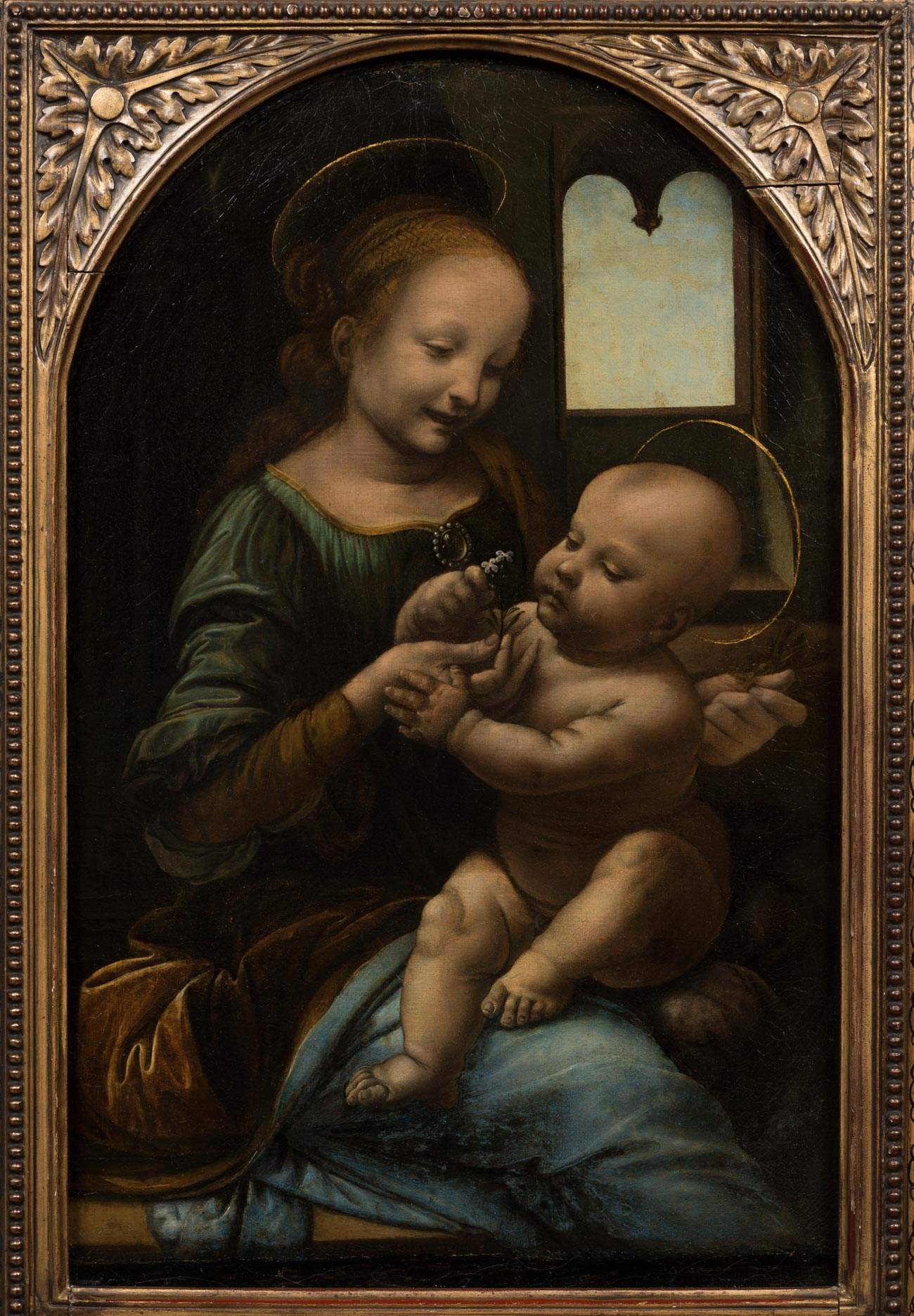As our magazine had already anticipated earlier this month, the Benois Madonna, a masterpiece by Leonardo da Vinci (Vinci, 1452 - Amboise, 1519), is about to arrive in Italy from theHermitage in St. Petersburg. It will be from tomorrow until June 30 at the Pinacoteca Civica in Fabriano, then move, from July 4 to August 4, to the National Gallery of Umbria in Perugia. The Umbrian appointment promises to be of particular value because of the possibility of the comparison between the vincian work and the paintings that Perugino (Pietro Vannucci; Città della Pieve, c. 1448 - Fontignano, 1523) made after his return to Perugia from Florence, where he lived and worked until the 1590s (he and Leonardo worked together in Verrocchio’s workshop).
It is Giovanni Santi (Colbordolo, 1440 - Urbino, 1494), Raphael’s father, who in his Cronache rimate, written in 1482, remembers the two artists together citing them in the verses that read “Due giovin par d’etate e par d’amori / Leonardo da Vinci e ’l Perusino / Pier della Pieve ch’è un divin pittore”: thus writing, Santi emphasized the relationship that bound them. And the Benois Madonna, according to many, would have been made at a time when Leonardo began to break away from the master’s style (it can probably be dated to the late 1570s or early 1580s). In this image, the Tuscan genius proposed a figure of Mary read as a mother, almost a teenager, smiling and busy playing with her son. It is a work that makes manifest that desire to represent the soul that Leonardo himself had spoken of in his Treatise on Painting, pointing out that a good painter must paint above all two subjects, man and his soul, and that if the first of the two is easy, the second is dificult in that it must be represented by gestures and movements of the body.
“The Madonna,” points out Tatiana Kustodieva of the Hermitage Art Department, “came down from the throne on which the artists of the 15th century had placed her and went to sit on a bench, in a room of an inhabited house. The traditional curtain descending behind Mary’s back remained, which from a ceremonial sign, or a symbol of high places, became a fabric covering the back of a chair. The room is described with great parsimony, but Leonardo pays homage to his time by considering details such as Mary’s curls, the brooch, the fragile petals of the flower, and the heads of the nails in the window frame with the attention of a quattrocentist. Each object does not exist for itself and thanks to the light it participates in a unique environment.”
The exhibition at the National Gallery of Umbria is organized in collaboration with Villaggio Globale International and strengthens the already existing link between the National Gallery of Umbria and the Hermitage Museum in St. Petersburg: thanks to this collaboration, The Washerwoman, a masterpiece by Jean Siméon Chardin from the Hermitage, is featured in the Gallery’s exhibition dedicated to Soap Bubbles (running until June 9), while, last December, theAnnunciation of the Virgin Mary by Piero della Francesca, cymatium of the Polyptych of St. Anthony, was exceptionally loaned to the Russian museum, which now chooses to celebrate the genius of the great Tuscan artist in his native country.
The exhibition, titled simply Leonardo da Vinci. The Benois Madonna, can be visited during the Gallery’s opening hours: Tuesday through Sunday from 8:30 a.m. to 7:30 p.m. and Monday from noon to 7:30 p.m. Tickets: full 8 euros, reduced 4 euros. For info on the exhibition, tickets (including concessions) and museum you can visit the National Gallery of Umbria website. Information also by phone 075 58668415 and email gan-umb@beniculturali.it.
Pictured: Leonardo da Vinci, Madonna Benois (c. 1482; oil on canvas, 48 x 31 cm; St. Petersburg, Hermitage)
 |
| Leonardo da Vinci's Madonna Benois at the National Gallery of Umbria, compared with Perugino |
Warning: the translation into English of the original Italian article was created using automatic tools. We undertake to review all articles, but we do not guarantee the total absence of inaccuracies in the translation due to the program. You can find the original by clicking on the ITA button. If you find any mistake,please contact us.